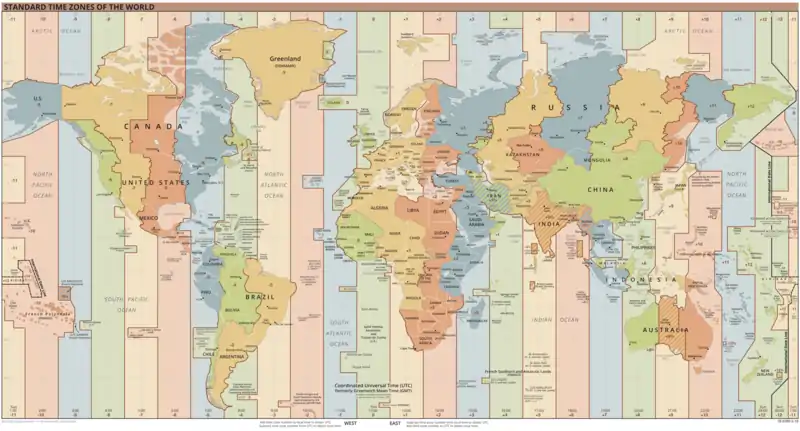UTC offset
The UTC offset is the difference in hours and minutes from Coordinated Universal Time (UTC) for a particular place and date. It is generally shown in the format ±[hh]:[mm], ±[hh][mm], or ±[hh]. So if the time being described is one hour ahead of UTC (such as the time in Berlin during the winter), the UTC offset would be "+01:00", "+0100", or simply "+01".
Every inhabited place in the world has a UTC offset that is a multiple of 15 minutes, and the majority of offsets (as well as all nautical time zones) are measured in whole hours. There are many cases where the national civil time (ignoring Daylight Saving) uses a UTC offset (time zone) that differs from the theoretical one appropriate to its longitude.
Time zones and time offsets

A time zone is a geographical region in which residents observe the same standard time.
A time offset is an amount of time subtracted from or added to Coordinated Universal Time (UTC) time to get the current civil time, whether it is standard time or daylight saving time (DST).
In any particular time zone, residents either observe standard time all year round (as in Russia or South Africa), or observe standard time during winter and daylight time during summer (as in most of the United States and Europe).
Daylight saving time
Several regions in North America, Europe and Australia use daylight saving time (DST). The UTC offset during observation of DST is typically obtained by adding one hour to standard time. Central European Time UTC+01:00 is replaced by Central European Summer Time UTC+02:00, and Pacific Standard Time UTC−08:00 is replaced by Pacific Daylight Time UTC−07:00.
See also
- ISO 8601 – international standard for representing dates and times.
- List of UTC time offsets

